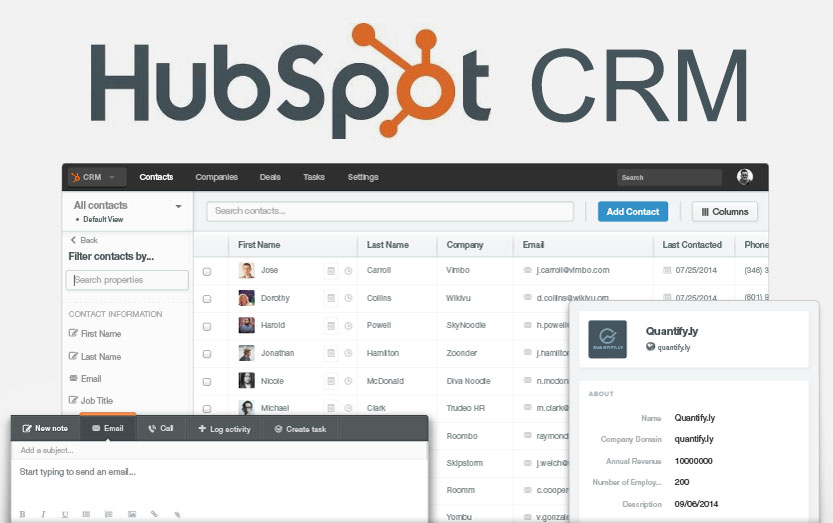Perhaps the most effective way to raise money for your business is to attract and acquire corporate sponsors. There is a massive pool of large corporations that are seeking out small business, and non-profit organizations to invest in for a number of business objectives. Some are pursuing working with charities to gain good publicity, others pursue businesses to get in on the ground floor of a potentially profitable investment.

If you’re trying to acquire corporate sponsors, social media gives you an arsenal of tools to do just that. This article dives into these tools, outlines the channels that are most useful for pitching sponsors, and how to use these sites to successfully acquire sponsors.
Develop Your Own Audience
Before you try to even approach prospective sponsors, you need to get prepared. Not only do you need a good sponsorship proposal, you will need to cultivate your own audience online. When you’re at a point where you’re ready to start contacting sponsors, the first thing they’ll do is look up your social media profiles and your website. If you’ve reached out to someone on Twitter and you only have 75 followers, you’re not going to leave the best impression.

Everything you do at this point should be geared towards building a growing, organic social media presence on the channels that make the most sense to your brand. The way you approach doing this depends on your business and industry. Having engaged, plentiful followers on Facebook and Twitter is a good start, but it takes more than numbers. It’s common knowledge that all it takes to buy followers is a five minute search on Fiverr.
Take the time and make the effort to attract engaged social media followers– it will pay off when you begin to reach out to prospective sponsors.
How to Find Prospective Sponsors
The majority of the sponsors you’ll be interacting with will be on several social media channels, but they tend to favor one or two of those. Take careful note and approach them on the channel that’s a clear favorite. There’s no one specific site to connect with sponsors successfully, just pay attention to the habits and preferences of the people you’re trying to contact. Some people are most active on Twitter, some are most comfortable with Facebook and LinkedIn.
You should approach this with the mindset of connecting with individual people, not just businesses. This means that your efforts should go above and beyond liking or following the business pages of the companies you’re targeting. After identifying companies that fit your business as prospective sponsors, take the time to identify specific people in that organization.
This is such a minimal investment of time and money, you should try to connect with as many people in a prospect company as possible. You only need one relationship with a key decision-maker inside a target company to get the ball rolling.
Make Developing Relationships the Center of Your Strategy

You just connected with a key decision maker in one of the businesses you’re pursuing. Just sending your new connection a message saying “please sponsor my business” probably isn’t the best strategy and won’t likely work. You need to focus on developing these relationships with the people you connect with. This may sound like an incredibly labor intensive, long drawn-out process but remember, social media operates at a speed unlike many other communication channels. You will likely be able to exchange multiple messages with someone in just a few days.
Here’s a few tips to use when you’re trying to develop relationships with key decision makers in corporations:
- Get genuinely interested in their activities online. When you reach out to someone, it’s always a great practice to refer to an article, blog post, video or conference they’ve recently spoke at. Refer to something specific so they know that you’re actively engaged with what they’re doing.
- Share the content they produce. This means retweeting, sharing Facebook posts and otherwise distributing their content. Do this on your own social media pages, blog, or anywhere else you’re active online.
- Connect with as many industry experts as possible. This goes far beyond engaging with companies that you think might sponsor you. The more relationships you cultivate, the better chance you have of finding the right sponsors. Establishing strategic alliances enhances your status in your industry, but not only that, it gives you access to people who know the people in the companies you’re trying to approach.
How to Pitch and Request Sponsorships

Are you a master at crafting sponsorship proposals? If you’re confident in your skills, feel free to contact people you just met online. Typically, establishing a relationship first is the best course to follow. Either way, there are treacherous waters ahead- be cautious in how you word your following communications.
- Ask for a meeting or phone call. You will never close a sponsorship deal on Twitter, Facebook or LinkedIn. The end goal with using such platforms is to get your foot in the door to open up a real conversation with key people at target companies. Your focus should be on creating a compelling pitch that sparks their curiosity to the point where they listen to what you have to offer.
- Put the focus on the benefit you offer to their company. You’ll obviously get something from this partnership, but it’s up to you to demonstrate the value that the sponsor will receive.
- Cast a wide net. Don’t get attached to any one particular sponsor. It’s possible that you’ll have to contact hundreds of people in an array of companies before you land a deal with the right company.
- Craft an engaging sponsorship letter. This is a letter that demonstrates the value to both you and your prospect. Starting with a template is fine, but be sure to adjust it to specific companies. Timing is crucial here, it’s best if you send this letter once you have an existing relationship with the potential sponsor.
Track Everything From Sponsors

Use your contact management software to track all your prospective sponsors and any interactions. Using a CMS can help you sell more sponsorships and raise more money for your organization. Seeing your prospect management software as a valuable, money-making member of the team, the sooner you’ll be on your prospecting A-game.
Whatever you use, develop a process that works for you. Having a solid process will allow you to quickly recognize your best prospects. With new events that have no previous history with sponsorships, start with supporters and work your way out.
Record every bit of communication or intelligence about a prospective sponsor. Did you send a message to a key decision maker? Log it. Send an email to a new contact at the company? Log it. Saw a recent story about a company you’re pursuing online? Paste the URL in the prospective sponsor’s notes. These little nuggets of information likely mean nothing at the time, but stringing your information together in a comprehensive series of notes may reveal an approach you didn’t see or highlight another potential opportunity.
Let your system do the work. Notes, appointment scheduling, and to-dos should all be left to the software. Remember, your system is only as good as the person implementing it.
Conclusion: Closing the Deal

Closing sponsorships is no easy feat, especially these days. Companies scrutinize everything and are watching every penny spent. If you’re not careful, you could give a fantastic presentation and still lose the deal.
Here’s how to close the pitch successfully:
- Build all packages to be a la carte. Don’t allow a sponsor the ability to shoot you down by walking in with a single sponsorship option to approve or deny. All sponsorship packages should be built from the ground-up, allowing a sponsor to swap things in and out based on their needs, objectives, and budget.
- Offer to help as often as possible. Companies are busier than they ever have been. While sponsorships with you could be a fantastic opportunity, the success of their organization is not dependent on it. Positioning yourself to be as helpful as possible goes a long way.
- Increase the touch points with a prospective sponsor. Look for ways to make it less transactional and establish a more meaningful relationship with the company you’re working with.
- Non-profits aren’t the only organizations that appreciate free. Your prospective corporate sponsor would likely love a free sponsorship, but that leaves you at a bit of a disadvantage, doesn’t it? In order to make it free, you have to add a little creativity to your strategy so that you reap the benefits out of it- cause-marketing is extremely effective. When a company shares a cause related to your event or company with its employees, it could lead to you raising more money than you ever could from the company checkbook.
Using social media to attract prospective sponsors is a powerful, effective strategy. But don’t limit yourself- utilizing email and offline strategies can add an entirely new dimension to your efforts. With so many business owners and c-level executives being active on social media, you shouldn’t overlook this avenue to find prospective sponsors, but channel diversification is important in any major outreach initiative you participate in.
About the Author

Kristen Bowie is a marketing obsessive & advocate for the knowledge economy. When she’s not writing for Qwilr, she’s hanging out with her two goats & painting.



